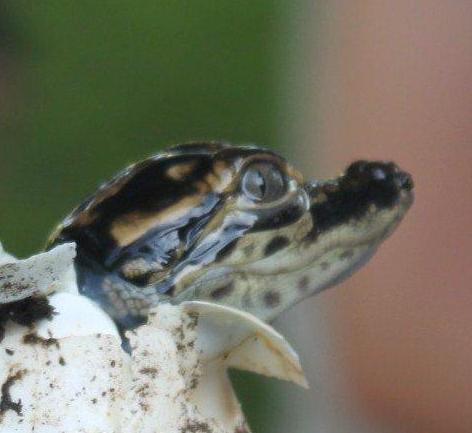|
Description - Body 1 1/4 - 2 inches (3.2 -5.1 cm). Coloration is normally
a mottled gray, but some appear more greenish-gray or pearly-gray depending upon it’s environment
or activity. Light colored spots appear below each eye. The concealed surfaces of hind legs are bright
orange to yellow-gold in color. These bright "flash colors" on the legs are thought to serve
to confuse predators. Skin is not as smooth as other treefrogs, but not as bumpy as toads. The Gray
Treefrog is extremely well camouflaged while it is perched on a trunk tree.
Voice - A short metallic trill, lasting about 1 second and repeated every few
seconds. It’s call has been compared to that of a Red - Bellied Woodpecker or even an electronic buzzer.
Normally calls in late Spring to Early Summer from a tree trunk or other object several feet above the ground.
Habitat - The Gray Treefrog prefers swamps or wooded ponds and streams where it
can find a relatively high perch on a tree or shrub to call from. Rarely seen on the ground except
during breeding.
Breeding - This frog has a fairly short breeding period lasting from about
April to June. Males gather at ponds surrounded by trees or shrubs, where they call from elevated perches.
Once a female is present then the male will come down from his perch to breed. Gray Treefrog choruses
during late Spring and early Fall can be deafening.
Range in Texas - Gray Treefrogs are found in the eastern half of Texas, except
far South Texas.
Notes - These two species of Gray Treefrogs are indistinguishable by appearance.
For many years these were thought to be a single species. Only through careful call analysis
and determining the numbers of chromosomes can the species be determined. It is unsure if both species
occur at Brazos Bend State Park, but attempts are being made to determine this.
|




